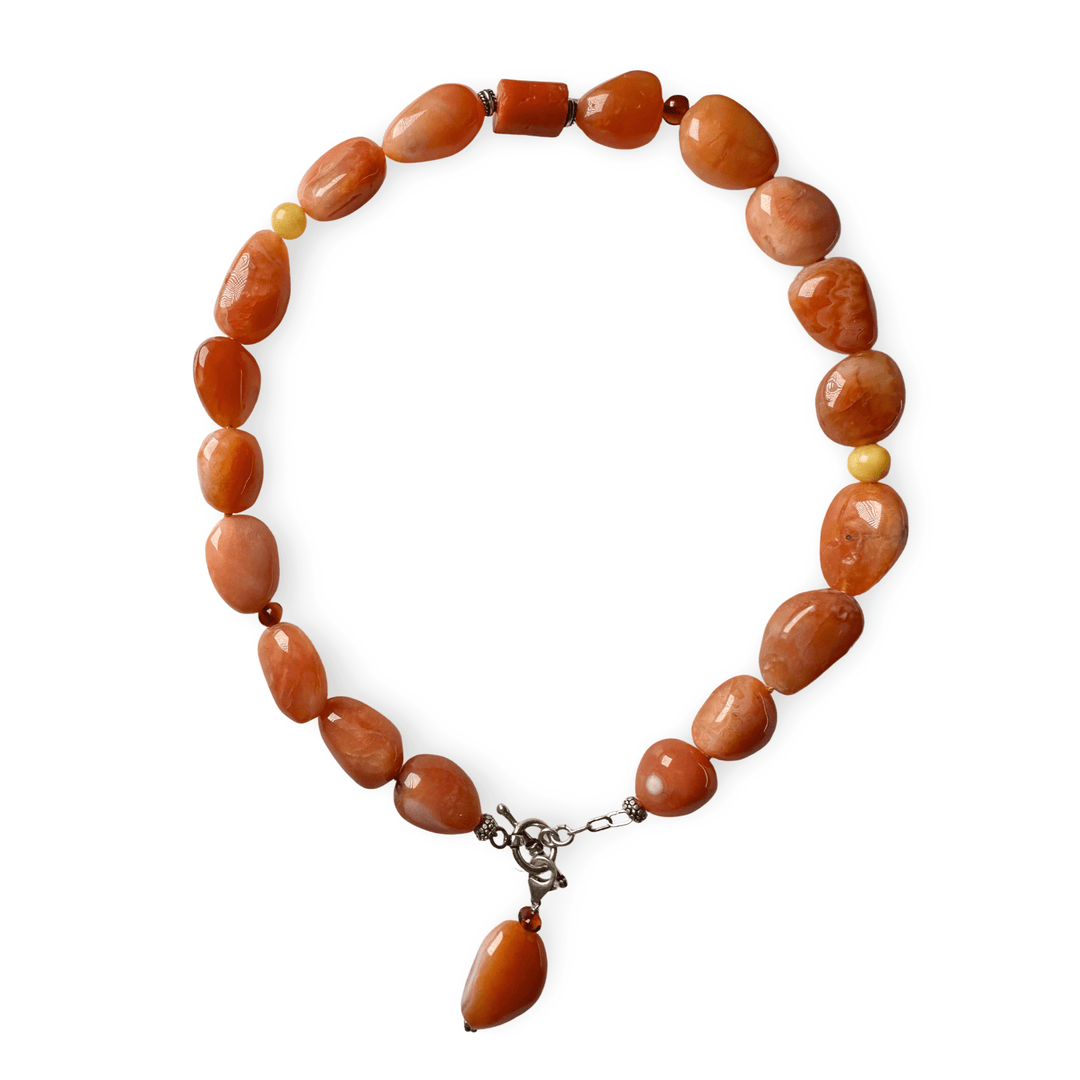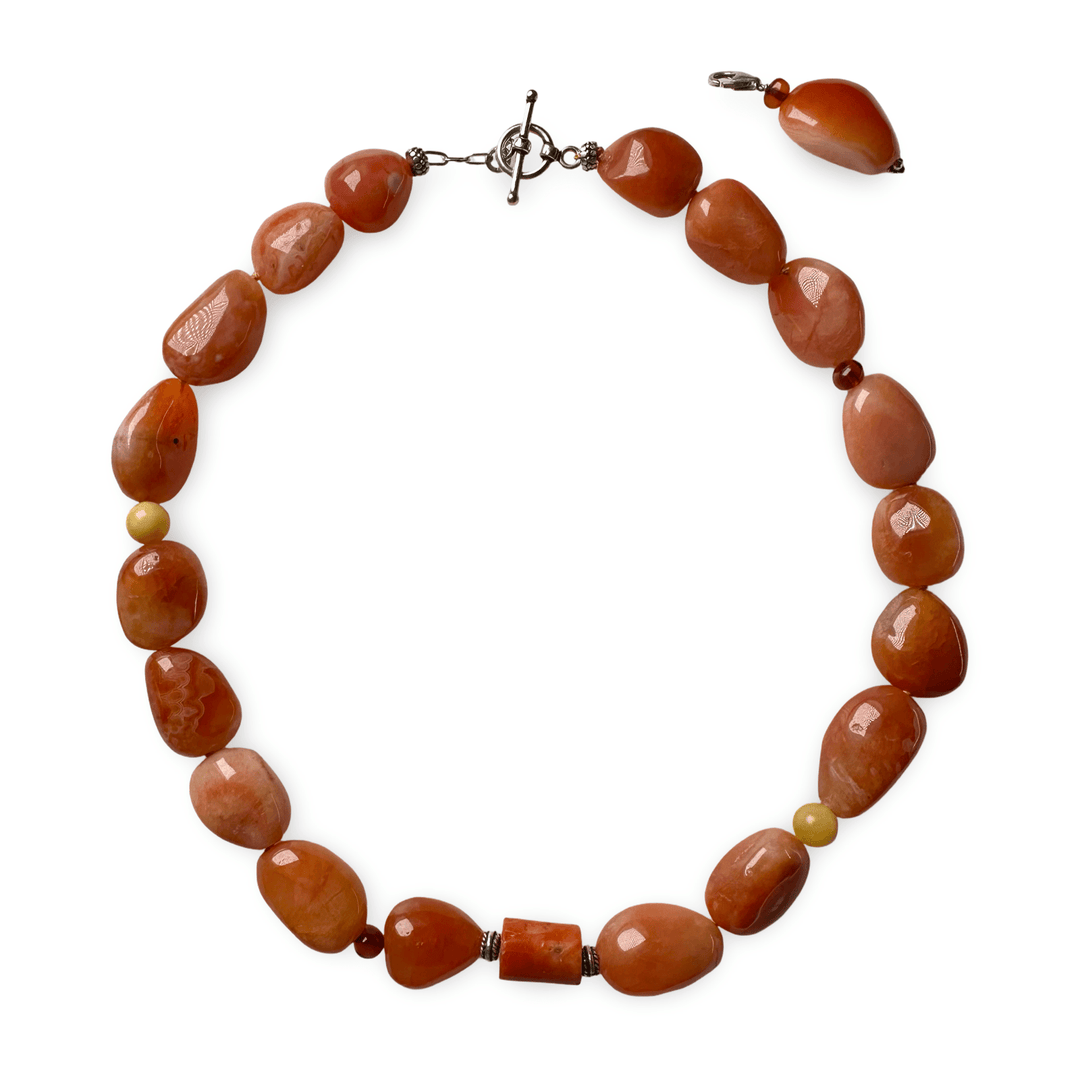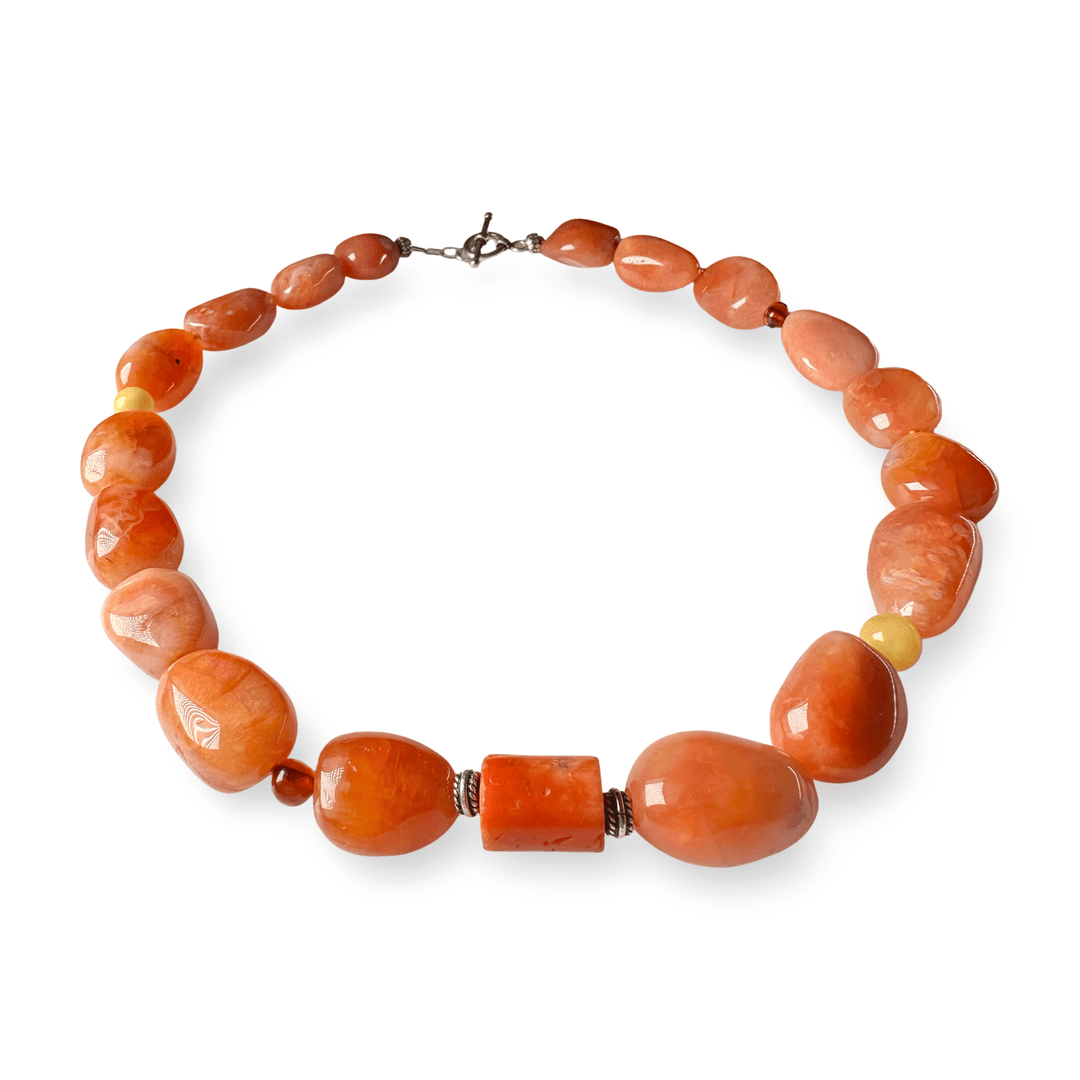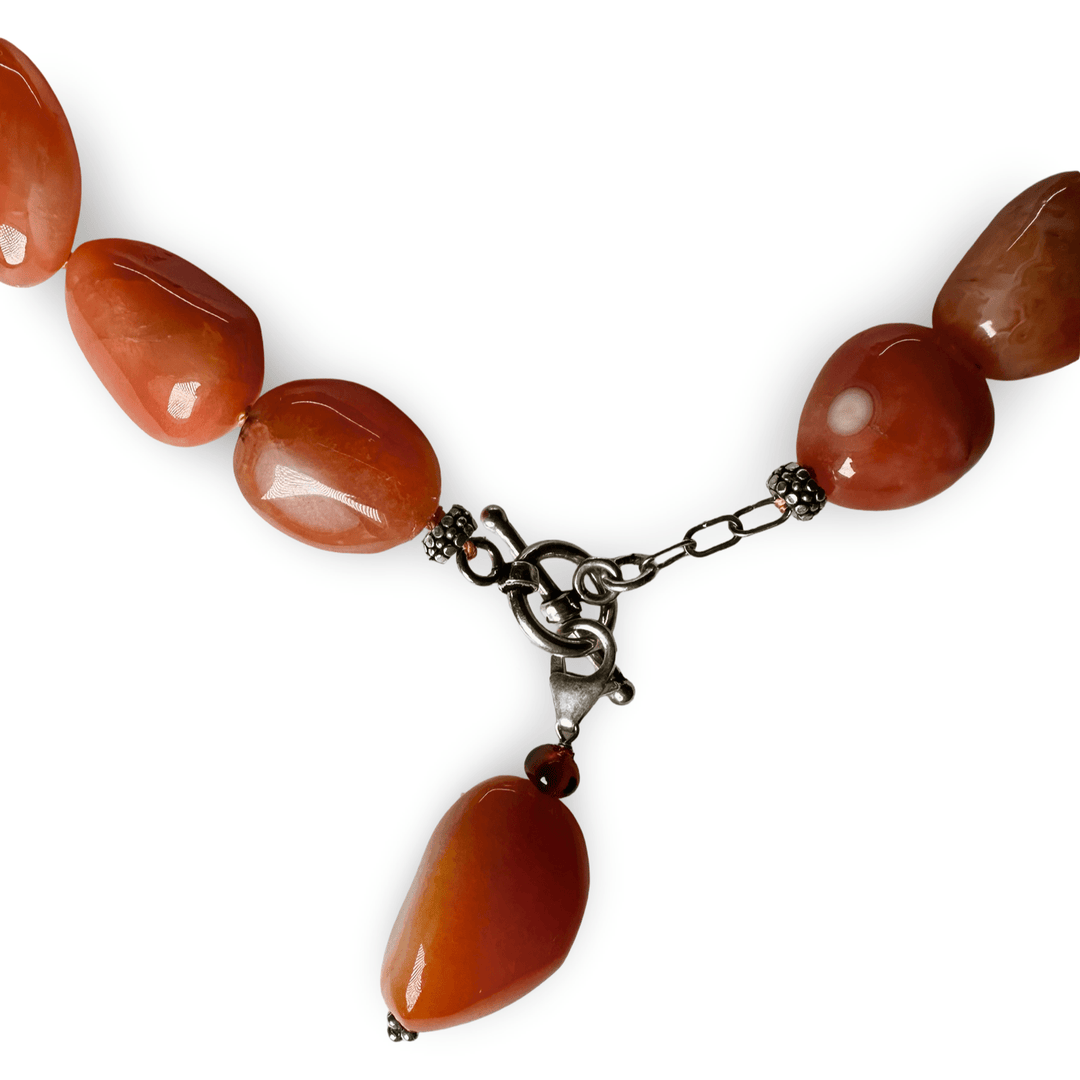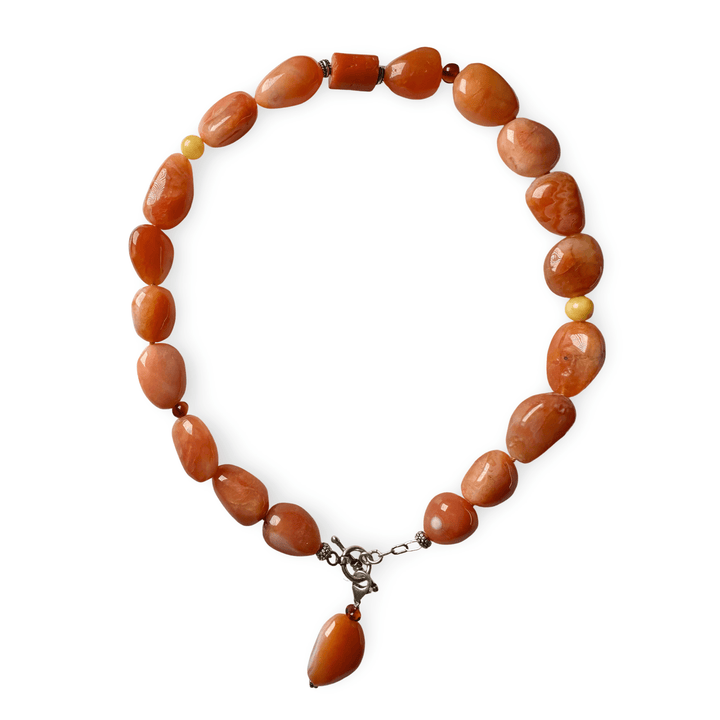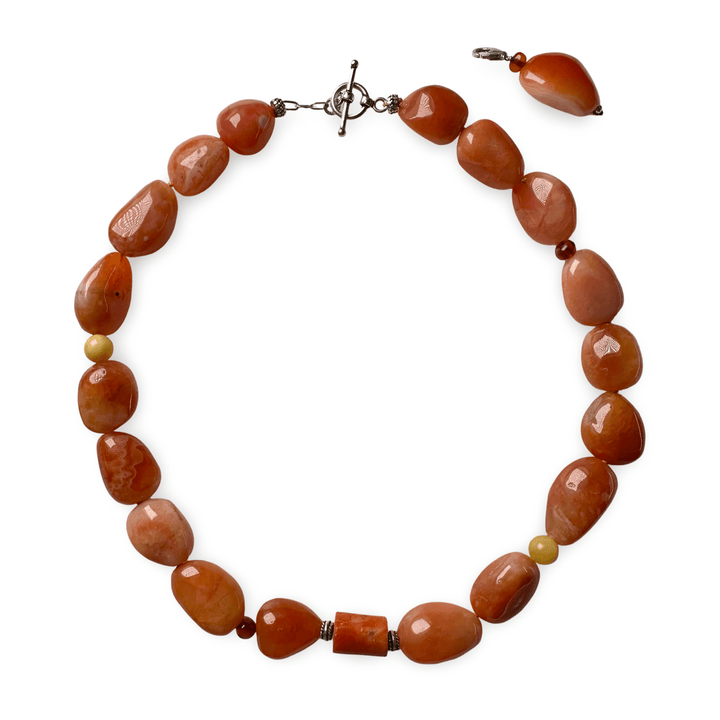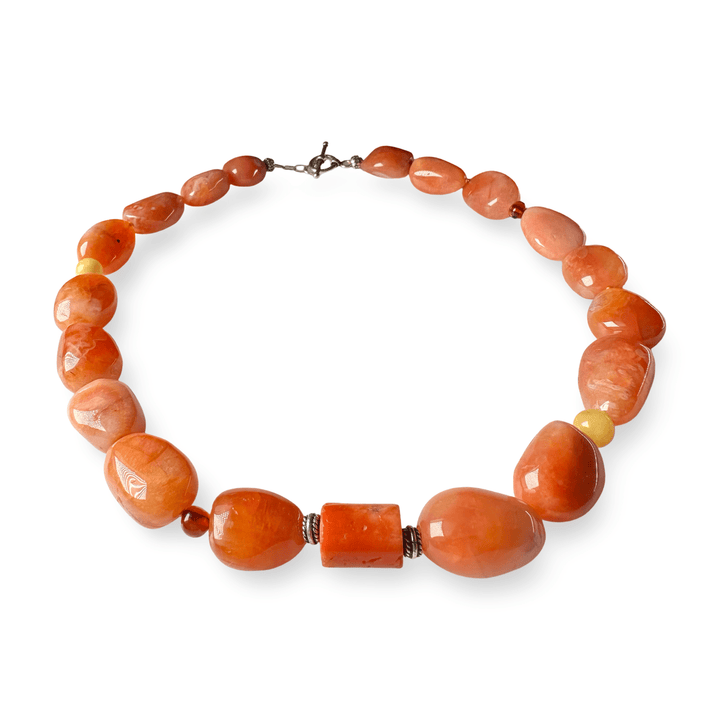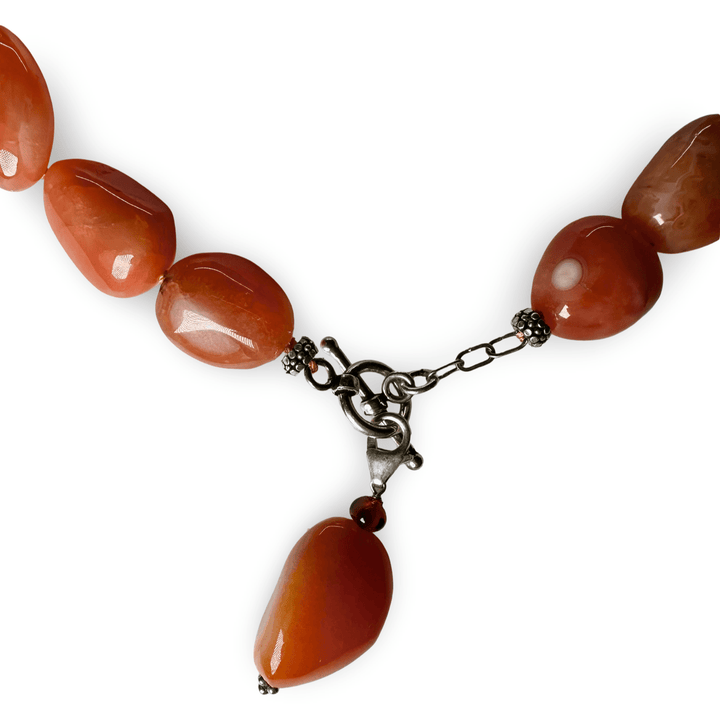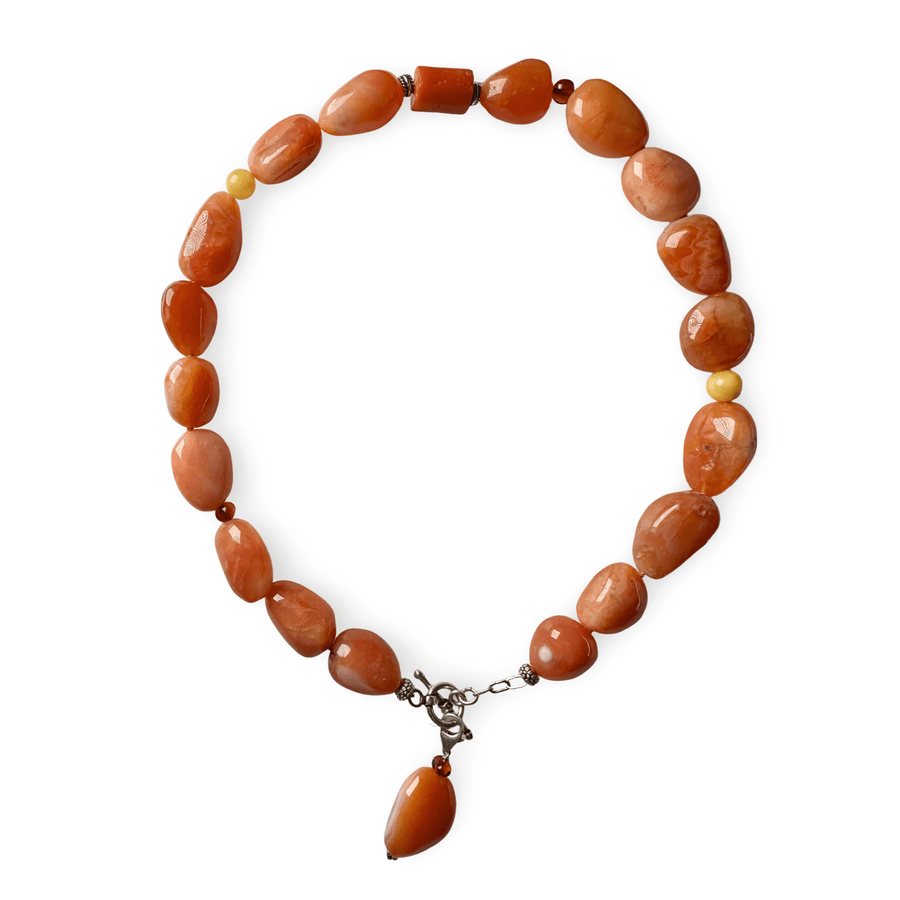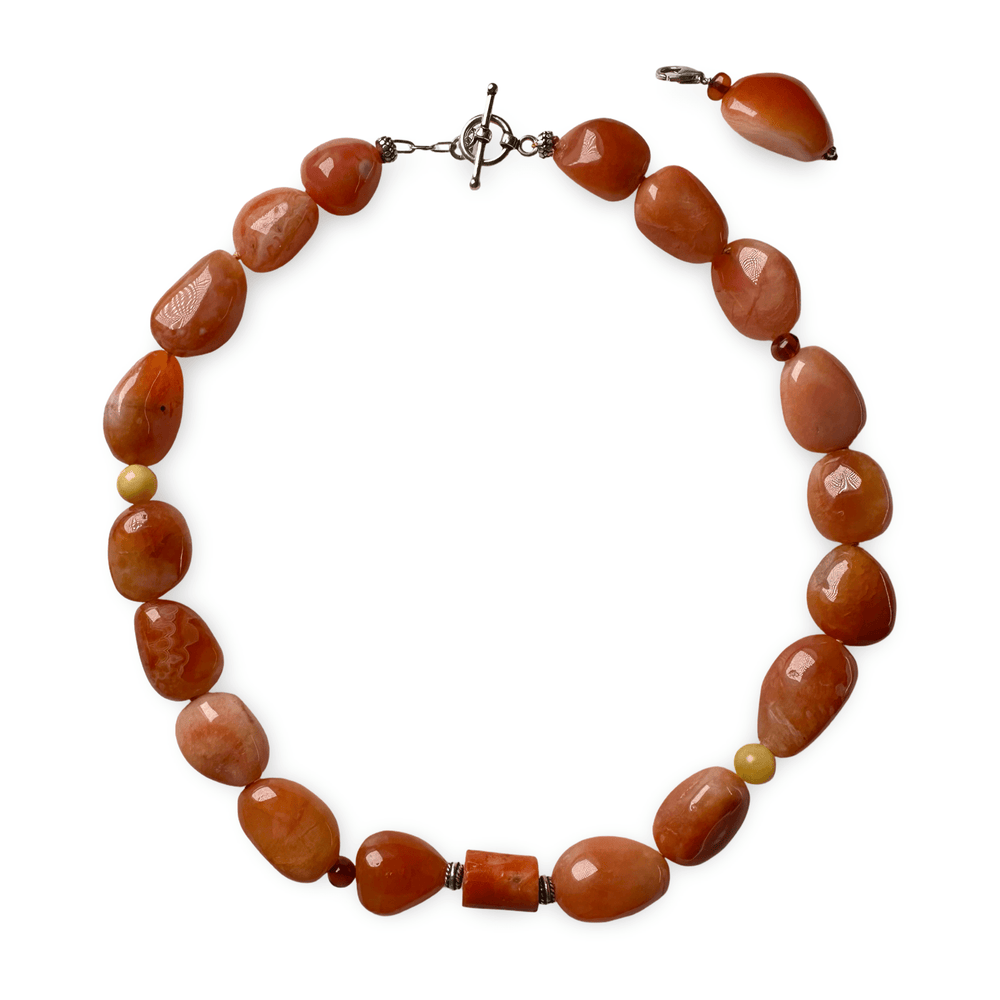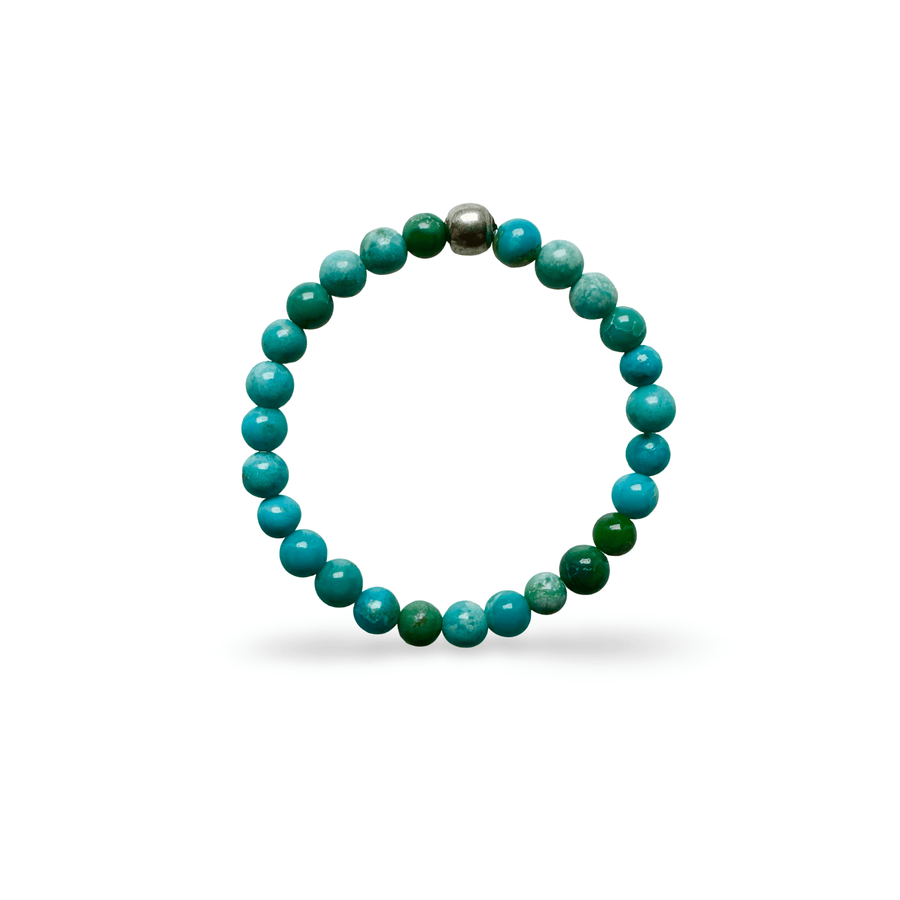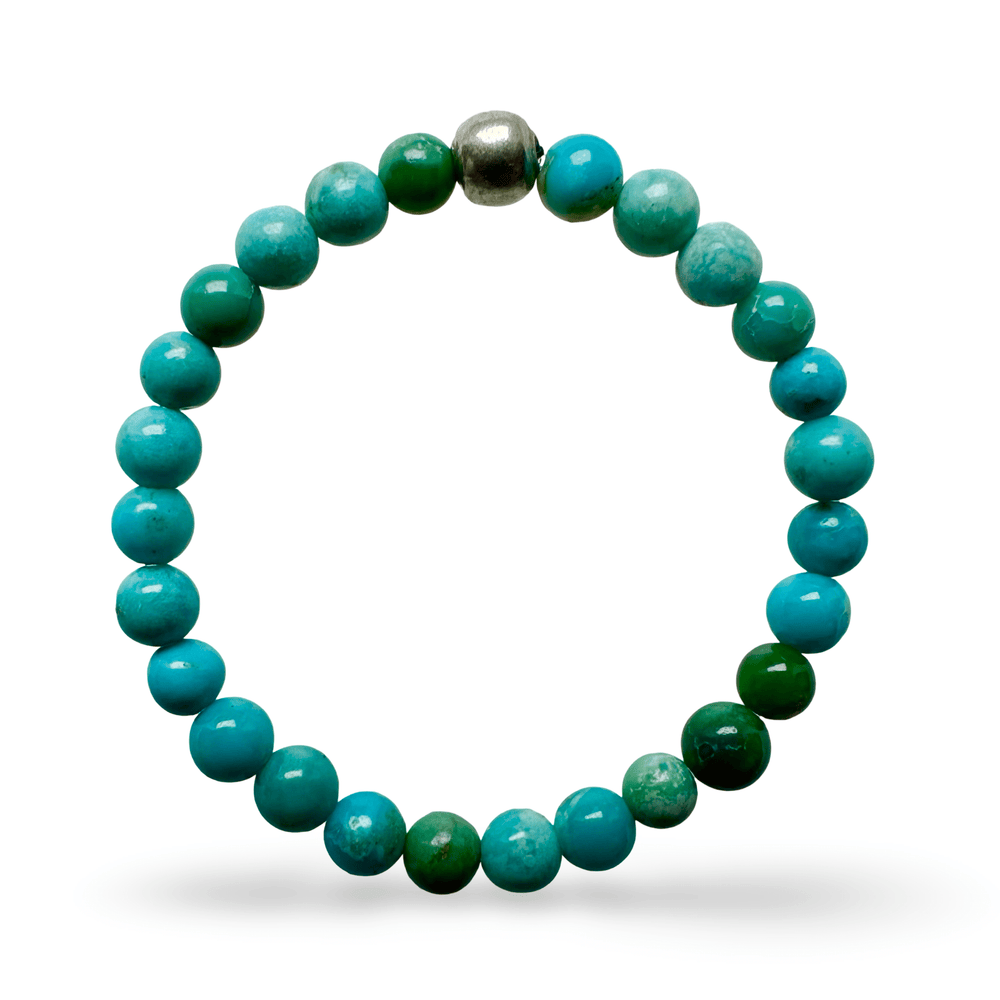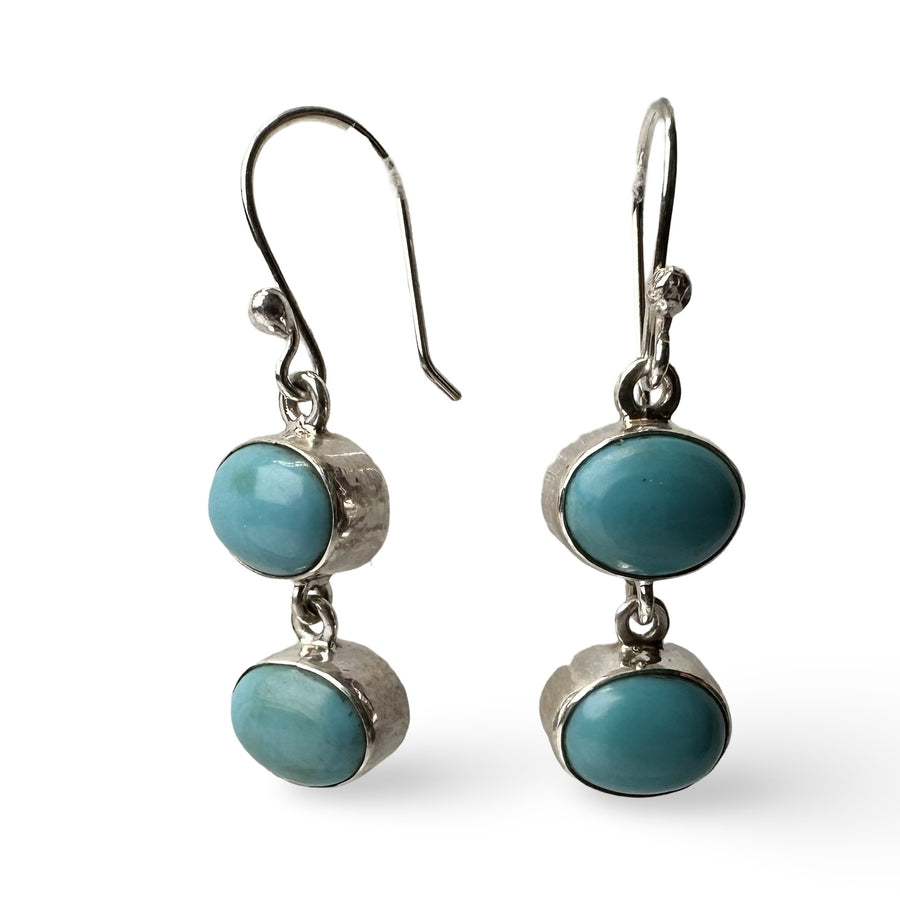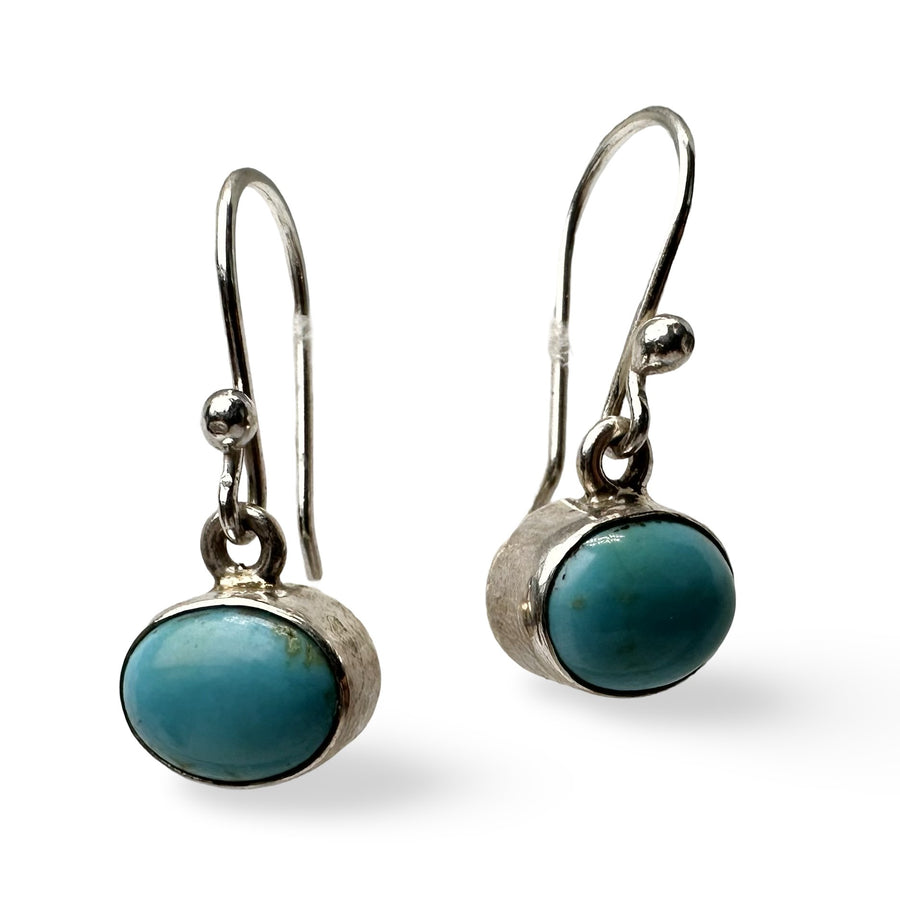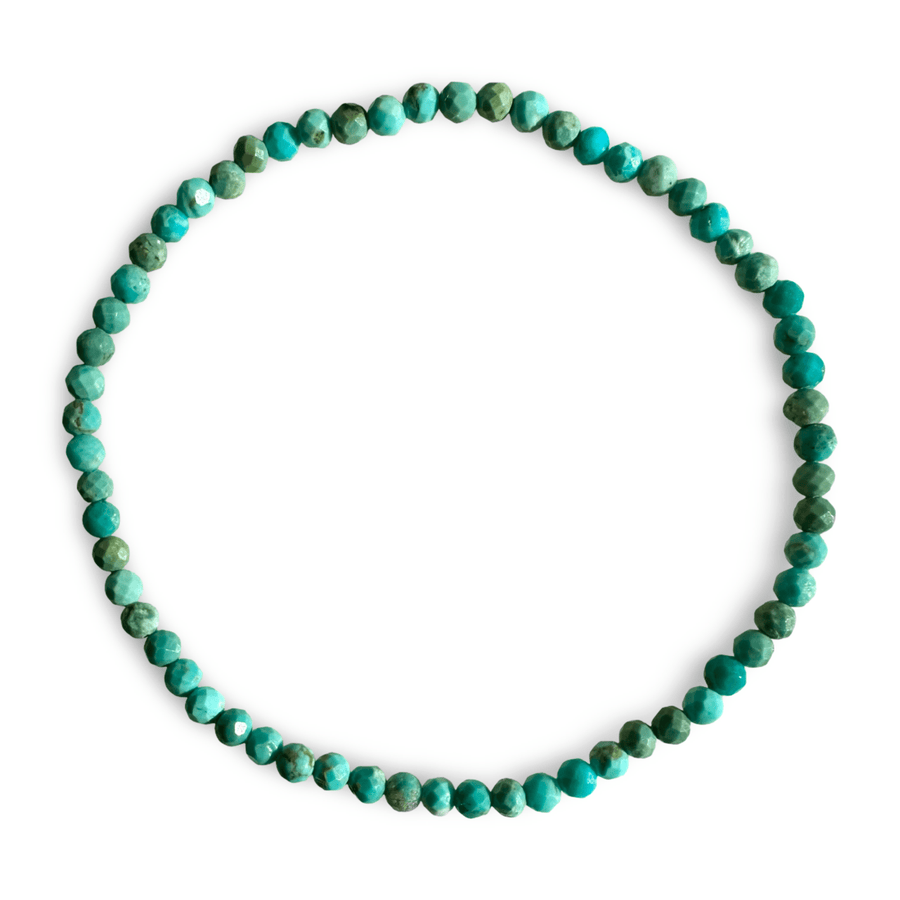Versatile wearable necklace made from agate, amber, silver and old coral
Unusual necklace made from naturally shaped, polished orange-red agate beads with a diameter of approx. 12-15 mm, which are interspersed with amber and silver beads. A large antique coral bead is attached to one side of the necklace. The necklace is fastened with a silver T-clasp. As a special feature, a pendant made of an agate and an amber bead can be attached to the clasp so that the necklace can be worn "upside down". However, the pendant can also be worn separately, e.g. on a silver chain.
The unique piece has a circumference of 46 cm and was handmade in Atelier Tibet in Zurich.
Agate is a banded variety of chalcedony and is formed by the deposition of quartz in cavities in volcanic rocks. The multi-colored, concentric or wavy layers make it a popular decorative stone. Agate has also been used as a protective and healing stone since ancient times and is symbolic of strength and harmony.
Amber is a warm, golden yellow gemstone made from fossil resin that plays an important role in Tibetan jewelry. In traditional pieces of jewelry, it is often used in combination with turquoise, coral and silver. In Tibetan culture, amber symbolizes protection, healing and wisdom. Monks and believers often wear amber as a talisman to ward off negative energies. It is usually crafted by hand, making each piece of jewelry unique and of great cultural value.
Coral has a deep spiritual and cultural significance in traditional Tibetan jewelry. The red precious coral (Corallium rubrum) is particularly prized. In combination with turquoise and silver, coral beads are a characteristic element of Tibetan prayer beads(malas), amulets and ritual jewelry. As Tibet is a landlocked highland, coral was imported from the Mediterranean and the Southeast Asian region via centuries-old trade routes. Nowadays, precious coral is strictly protected, which is why modern Tibetan jewelry is made with old, recycled coral or sustainable alternatives.
Bracelets, bracelets, bracelets, bracelets, chains
| age | Wrist circumference |
|
Newborn |
9 - 12 cm |
|
6 months - 3 years |
12 - 14 cm |
|
4 - 10 years |
14 - 15 cm |
|
Teenager, ladies (XS) |
15 - 16 cm |
|
Ladies (M) |
16 - 17 cm |
|
Ladies (XL) |
18 - 19 cm |
|
Men (M) |
18 - 20 cm |
|
Men (XL) |
21 - 22 cm |
The length of the bracelet may be 1 cm to 3 cm longer than the measured wrist circumference, depending on your taste.
Finger rings
| Ring size | Inner diameter | Inner circumference |
|
48 |
15,3 mm |
48 mm |
|
50 |
15.9 mm |
50 mm |
|
52 |
16.6 mm |
52 mm |
|
54 |
17.2 mm |
54 mm |
|
56 |
17.8 mm |
56 mm |
|
58 |
18.5 mm |
58 mm |
|
60 |
19.1 mm |
60 mm |
|
62 |
19.7 mm |
62 mm |
|
64 |
20.4 mm |
64 mm |
|
66 |
21.0 mm |
66 mm |
- Take a ring that fits well.
- Place it on a ruler and measure the inner diameter (from one inner edge to the other).
- Compare the diameter with the table to determine the ring size.
- Take a thin strip of paper or thread.
- Wrap it around the part of the finger where you want the ring to sit (not too tight).
- Mark the point where the ends meet.
- Measure the length of the strip in millimeters. This is the inner circumference.
- Find the right size in the table.
- Measure the finger size in the evening, as fingers swell slightly during the day.
- If you are between two sizes, choose the larger size.
- Make sure that the ring fits over the knuckle.
- Free shipping from CHF 150


